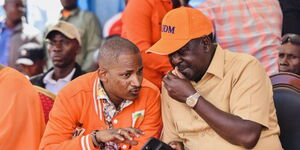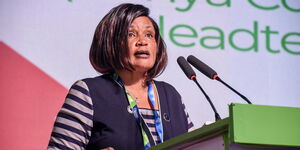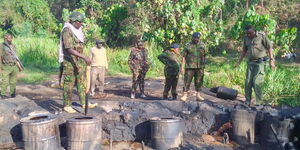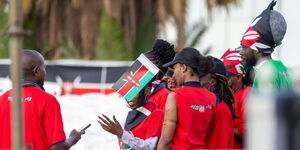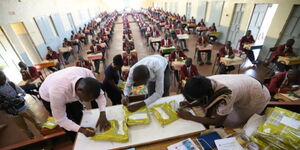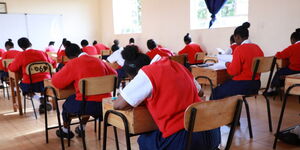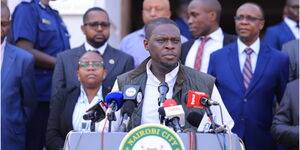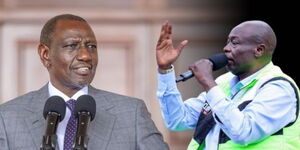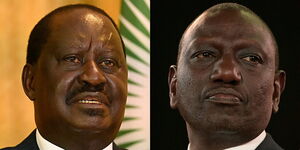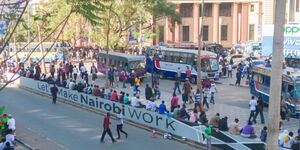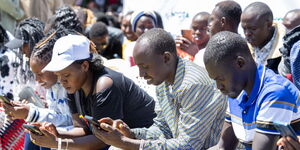Every 1st of June, Kenya comes to a standstill to commemorate Madaraka Day. It was on this very 57 years ago in 1963, that Kenya attained self-governance from colonial rule, with Mzee Jomo Kenyatta named as the country's first-ever Prime Minister.
Unknown to most, moments after the ceremony that was marked with pomp and colour, the new Prime Minister commissioned a 5-man team to compose a song that would be adopted as the National Anthem.
Little did Mzee Jomo know that he would settle on an adaptation of a popular Pokomo lullaby as the nation's song of freedom - an anthem that would steal hearts across the world during the 2016 Rio Olympics.
Back in May 1963, Mzee Jomo officially instituted the Kenya National Anthem Commission which comprised of: Peter Kibukosya (once chairman of the Kenya Music Festival), Prof Washington Ambrose Omondi (Kenyatta University (KU) Lecturer), George Zenoga Zake (founder of the Music Department at KU), Graham Hyslop (All Saints Cathedral Organist), and Reverend Thomas Kalume (first clergyman to be elected to Parliament as the Malindi North Representative).
The five were given one task by the PM - to create a song that would encapsulate Kenya's independence and inspire its citizens for generations to come.
Hyslop - who was also Kenya's inspector of Music and Drama for the Ministry of Education at the time, and the team held meetings at his Gill House, Nairobi, which was the Education Ministry's headquarters.
Having arrived in Kenya in 1936 as a 26-year-old, Hyslop is said to have traversed the region looking to sample the rich musical heritage, and gone on to author several books including Musical Instruments of East Africa and Folk Music of East Africa.
It was during one of his expeditions that he reportedly came across a Pokomo lullaby whose melody was so infectious that it was the first tune he proposed for a possible adaptation.
Titled Bee Mndondo Bee, the song was credited to Mzee Maroa Galana, who detailed it as a song sang to soothe children to sleep, "simply an adult telling a child not to fear as the sounds heard outside was just a goat bleating. The adult then asks who had wronged the child and then assures the young one that he would go to fight them," he once explained.
The Great Project
The special commission is then said to have embarked on an expedition to the Kenyan Coast, where they sampled and recorded folk tunes for possible adaptation as Kenya's National Anthem.
After a couple of weeks, the team presented 3 different tunes, including Mzee Galana's lullaby which ended up as the unanimous winner in August 1963.
However, during an interview published by the Daily Nation in December 2015, Proffesor Omondi stated that they sampled various tunes for consideration, but that none could be attributed to a single individual.
"Like most folk songs, there was no known composer of most of these Pokomo folk songs," he asserted.
Interestingly, it was the late Reverend Kalume who is credited for insisting that the first stanza be a prayer, and that is how the famous O God of all creation, Bless this our land and nation, verse was penned.
FA Thornton, who was the Kenya Police Bandmaster and Nat Kofsky - East Africa's Conservatoire of Music - were enjoined in Kenya National Anthem Commission, and it was a presentation by the police band in August 1963 that led to the crowning of the adaptation of Galana's lullaby as the winner.
On September 4, 1963, the All Saints Cathedral choir and the Railway Training School choir made their way to Mzee Jomo Kenyatta's Gatundu Home (Mzee Jomo refused to sleep at State House, Nairobi until his death on August 22, 1978).
A gathering of local residents had been called to help in approving which song carried the day, as there were other entrants, including one by the Gerishon Manani dubbed Kenya Taifa Letu.
The Pokomo lullaby adaptation once again carried the day and the Prime Minister sent a letter of gratitude to the commission in November 1963.
Sadly, that was the only recorded acknowledgment of the commission's efforts by the State.
On his part, Mzee Galana only learned that his melody had been adapted as Kenya's National Anthem on his radio during the Jamhuri Day celebration on December 12, 1963.
"We silently listened to the King's Anthem and after it ended, we prepared to hear our own new national anthem which we had been told would be sung for the first time that night.
"Then the new anthem came on air. The tune was that of my song even though the words had been changed," the late Mzee Galana narrated to the Daily Nation during an interview in 2011.
In 2013, the then 95-year-old held what was to be his final interview in which he called out the government for the lack of recognition over his melody.
"Never trust the Government of Kenya, it only gives lip service to its heroes, most of whom are living in deplorable conditions.
"I may not have held a gun and taken to the bush like Dedan Kimathi and the other field marshals. However, I contributed the melody and the whole world acknowledges that," he stated while speaking to a writer based in Tana River County.
Mzee Galana died on November 12, 2015, with President Uhuru Kenyatta going on to send condolences to his family as well as some gifts, Royal Media Services had also built the aging Galana a house one year before his death.
Controversy
Controversy still surrounds the story of claims by media houses that Mzee Galana composed Kenya's National Anthem.
Following his death, Prof Washington Omondi came out with a strongly worded statement in which refuted claims that Mzee Galana was one of the composers, going on to share the letter sent to the commission he was a part of, by Mzee Jomo Kenyatta, acknowledging their contribution.
"I take this opportunity to correct the fallacy and misinformation. I do not know where the media houses got that misinformation which was even passed on to His Excellency the President compelling him to send a message of condolence as well as a gift to the family.
"It is important for the media houses to ascertain fact when reporting so as not to mislead the public or to distort history. In this case, the facts are available in the Kenya Gazette of July 26, 1963," the professor's statement read in part.

